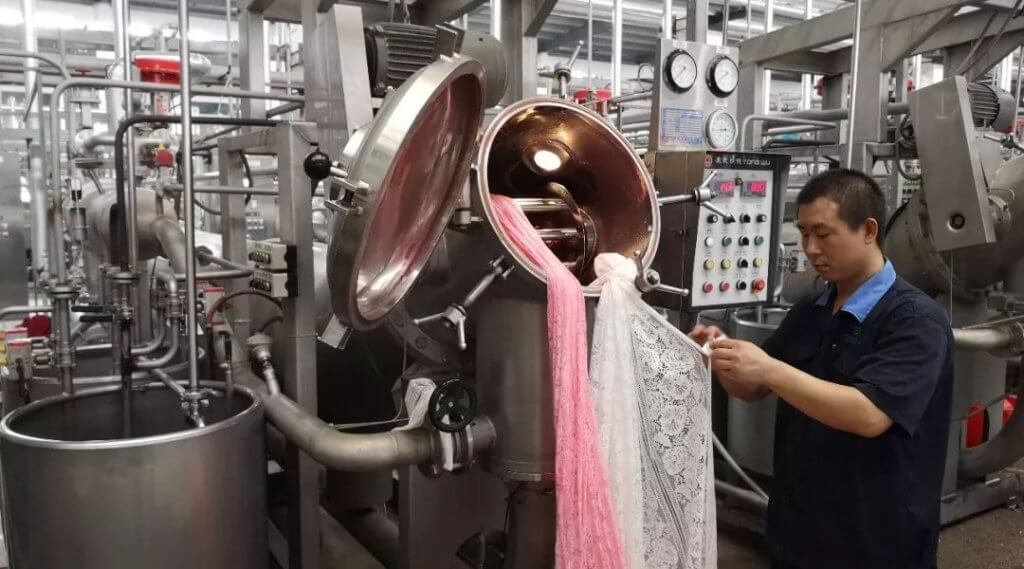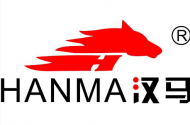Dyeing and Finishing Basics – Dyes and Dyeing
Dye Overview
- Dyes: refers to a class of organic compounds that can dye fiber materials. The dyes must have an affinity for fibers and have a certain color fastness.
- Pigments or coatings: insoluble in water, have no affinity for fibers, but can mechanically adhere to colored substances on the surface or inside of the fabric by the action of adhesives.
- Classification
3.1 Application classification: Classification according to the properties and application methods of dyes.
Divided into: direct dyes, reactive dyes, acid dyes, acid mordant dyes, vat dyes, soluble vat dyes, sulfur dyes, sulfur vat dyes, insoluble azo dyes, cationic dyes, disperse dyes.
3.2 Chemical classification: According to the chemical structure of dyes or their characteristic genes, they are classified into azo dyes and anthraquinone dyes.
picture
- Domestic commercial dyes and their names include three parts: the type of dye, the color of the dye, the color of the dye, the combination of performance status, concentration, and purity. such as acid-green B
4.1 Commonly used symbols and their meanings are listed as follows:
B: Indicates with blue light or cyan light
C: Indicates that it is suitable for dyeing cotton
D: Indicates that it is suitable for dyeing
E: Indicates that it is suitable for dip dyeing
EX: indicates high concentration
F: Indicates that the dyeing fastness is good or the dye particles are fine
G: Indicates yellow or green light
H: Indicates that it is suitable for dyeing of cotton-wool interwoven fabrics
J: indicates yellow light
K: Indicates that it is suitable for cold dyeing (referring to vat dyes), or indicates thermosetting reactive dyes.
L: Indicates light fastness or light fastness, or good solubility or level dyeing.
N: means normal or standard, and the formula is a new dye.
O: Indicates orange light or high concentration
P: Indicates that it is suitable for printing or dyeing paper, or indicates powdery dyes.
R: means with red light.
S: Indicates good water solubility or suitable for dyeing silk
V: indicates purple light
W: Indicates that it is suitable for dyeing hair
X: Indicates that the concentration is very high
Y: means with yellow lightpicture
- The power of dyestuff: refers to the standard of the dyestuff factory to select a certain concentration of dyestuff, and compare each batch of products with it.
Colorfastness
- Dyeing fastness: refers to the ability of dyed fibers or textiles to maintain their original color and luster under the influence of various external conditions during use or processing after dyeing.
- Introduction to common color fastness
2.1 Soaping fastness: The degree of resistance to the soaping of the dye is mainly related to the properties of the fiber and the dyeing and finishing process.
2.2 Lightfastness: refers to the degree of the lightfastness of dyes under the action of sunlight, which is divided into 8 grades.
2.3 Fastness to rubbing: The degree of rubbing resistance of dyed objects mainly depends on the amount of floating color and the combination of dyes and fibers.
color matching
- Color matching: In the printing and dyeing process, in order to obtain a certain color tone, it is often necessary to use two or more dyes for color matching, which is usually called color matching.
1.1 The three colors of red, yellow and blue are called the three primary colors of dye color matching. The final effect of color blocking is the result of the difference in absorption of the selected color blocking dyes.
1.2 Notes on color matching:
a, spelling dyes should belong to the same category
b. The color properties should be similar, otherwise, the dyeing shade will be inconsistent due to changes in the dyeing conditions, and the reproducibility will be poor.
c. The number of dyes used for splicing should be as small as possible, so as to control the color and light.
d. The two dyes are stagnant, and their color effect is related to their color light.
e. After color matching, dye the cloth sample, dry it, and cool it.
Dyeing and Finishing Basics – Basic Theory of Dyeing
The relationship between fiber structure and dyeing
The content ratio of the crystalline area and the amorphous area directly affects the dyeing of fibers.

Physicochemical properties of two dye solutions
- Except for disperse dyes, the dyeing forms of general dyes or dyes in solution are electrolytes.
- Under the general dyeing conditions, that is, the dye concentration is not high, the dyeing temperature is high, and the salts and auxiliaries are properly selected, most of the dyes aggregate in the solution is relatively low.
PART
Three dyeing processes:
The so-called dyeing is the process in which the dye is transferred to the fiber from the solution (medium), and the fiber is dyed through. There are three stages.
In the first stage, the dye diffuses from the solution to the surface of the fiber and is adsorbed on the surface of the fiber.
1.1 The directness of dyestuffs, the directness of dyestuffs to fibers is mainly due to the binding force between dyestuffs and fibers, that is, the so-called affinity.
1.2 The adsorption of dyes is a reversible process. In the early stage of dyeing, the adsorption rate of the dye is fast and the desorption rate is slow. As time goes on, the adsorption rate gradually decreases, while the desorption rate gradually increases, and finally equals. The dye uptake percentage when the dyeing balance is reached is called “dye equilibrium dye uptake percentage”, which depends on the structure and properties of the fiber, the properties of the dye molecules, and the dyeing conditions.
1.3 The application of neutral salt can accelerate and retard dyeing, and increasing the temperature can increase the kinetic energy of dye molecules, which is beneficial to overcome charge attraction. Make it easy for dye molecules to reach the surface of the fiber for dyeing.
② Stage: The stage in which the dye diffuses from the inside of the fiber on the surface of the fiber.
2.1 A slow process, is the most critical stage that determines the dyeing speed. The main factors are the affinity of the dye for the fiber, and the rate of diffusion.
2.2 Increasing the temperature can reduce the aggregation of dyes and increase the kinetic energy of dye molecules, which is beneficial to improve the diffusion rate of dyes. In addition, increasing the dyeing temperature can also promote fiber bulking to reduce diffusion resistance, speed up the dyeing process, and achieve a level of dyeing and penetration.
③Fixing stage: The dye is fixed inside the fiber, and the dyeing proceeds quickly, which has a great influence on the fastness of dyeing.
Dyeing and Finishing Basics-
dyeing equipment
PART
One category (three categories)
- Classification According to the mutual movement relationship between the dyed object and the dye solution during dyeing, it can be divided into:
1.1 The fabric is running, and the dye liquor does not move (rope dyeing machine)
1.2 The fabric does not move and the dye liquor circulates (beam dyeing machine)
1.3 The fabric is driven by the dye liquor or the two move together (overflow dyeing machine, jet dyeing machine, overflow dyeing machine)
- Good dyeing equipment is the joint research product of printing and dyeing machinery manufacturers, dye manufacturers, and dyeing craftsmen.
PART
Two advantages and disadvantages of various dyeing machines
- Rope dyeing machine: (atmospheric pressure rope dyeing machine) is mainly used for dyeing cotton knitted fabrics, but also for nylon and acrylic colors.
1.1 Advantages: The fabric feels better, is not affected, and the texture can be maintained.
1.2 Disadvantages: long dyeing time, low efficiency, and chemical fibers are prone to wrinkles and stains.
1.3 High-temperature and high-pressure rope dyeing machine, mainly used for dyeing pure polyester fabrics. The time is short, the dyeing is uniform, and there is no scratches, but it is not easy to operate, and it is easy to control wrinkles and creases.
- Beam dyeing machine: The knitted fabric is flatly wound on a hollow reel for dyeing.
2.1 Advantages: no rope stains are produced.
2.2 Disadvantages: Heavy fabrics are prone to color differences between the inner and outer layers, and the hand feel is hard and not plump.
- High temperature and high-pressure overflow dyeing machine and jet dyeing machine.
3.1 High temperature and high-pressure overflow dyeing machine
Advantages: The overflow principle is adopted to make the fabric in a relaxed state during the entire dyeing process, with very little tension, effectively preventing the creases and wrinkles of the fabric, and at the same time, it has a large capacity, uniform dyeing, bright color, and full hand feeling, soft.
Disadvantage: The bath is relatively large
3.2 Jet dyeing machine
Advantages: The tension of the fabric is small, the dyeing is uniform, the hand is soft, and the bath is small and the efficiency is high.
Disadvantages: The technical requirements for operation are high, the dyeing capacity is not large enough, and the phenomenon of cloth blocking is more likely to occur.
Related Article
Several types of regenerated fibers that are easily confused.
Read moreSeveral types of regenerated fibers that are easily confused.
Key technologies for double-sided circular knitting machine needle plate calibration
Read moreKey technologies for double-sided circular knitting machine needle plate calibration
How a Circular Knitting Machine Releases and Lowers the Fabric (Shake-down Process)
Read moreHow a Circular Knitting Machine Releases and Lowers the Fabric (Shake-down Process)
What is paper-type yarn?
Five fabric components most easily misidentified during testing
Read moreFive fabric components most easily misidentified during testing
